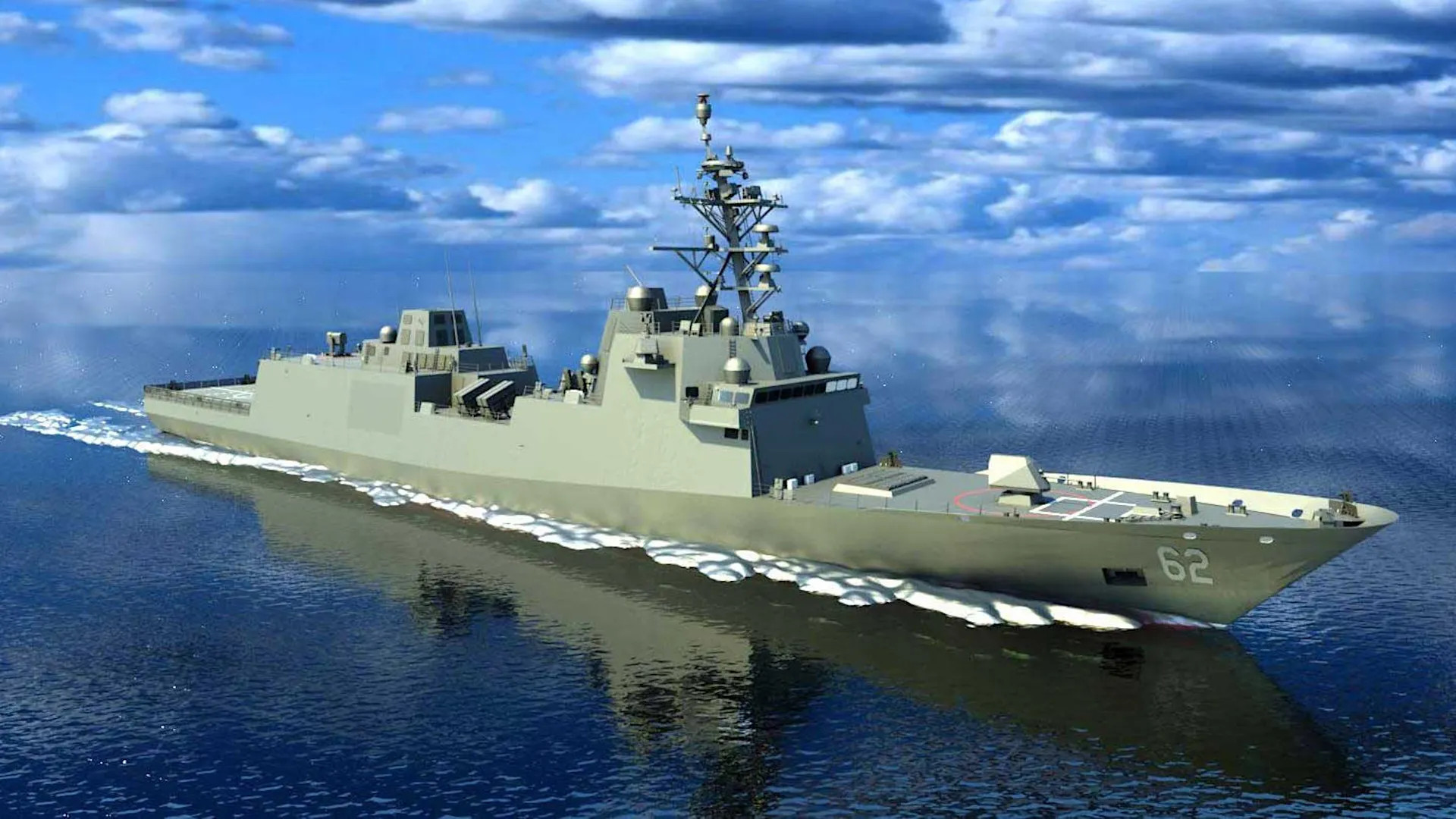The first Constellation class frigate for the U.S. Navy is just 10 percent complete more than two years after construction began and nearly five years after the award of the initial contract for the ship. The work is also continuing despite the continued absence of a firm functional design for the vessel, which is still weeks or even months away from being finalized and approved.
Major changes to the Constellation‘s configuration compared to its parent Franco-Italian Fregata Europea Multi-Missione (FREMM) have already led to serious delays and cost increases, and there are growing questions about the program’s future. A key program goal had been to take an in-service design that would only need relatively minor modifications to make it ready for Navy use, which would help keep the work on schedule and budget. The opposite has now happened.
Mark Vandroff, senior vice president of Government Affairs at Fincantieri Marine Group, confirmed the state of progress on the construction of the USS Constellation and provided an update on the program to TWZ‘s Howard Altman on the floor of the Navy League’s Sea Air Space 2025 exhibition earlier this week. 19FortyFive had first reported that the lead ship in the Constellation class was only 10 percent complete last month, citing an anonymous source.
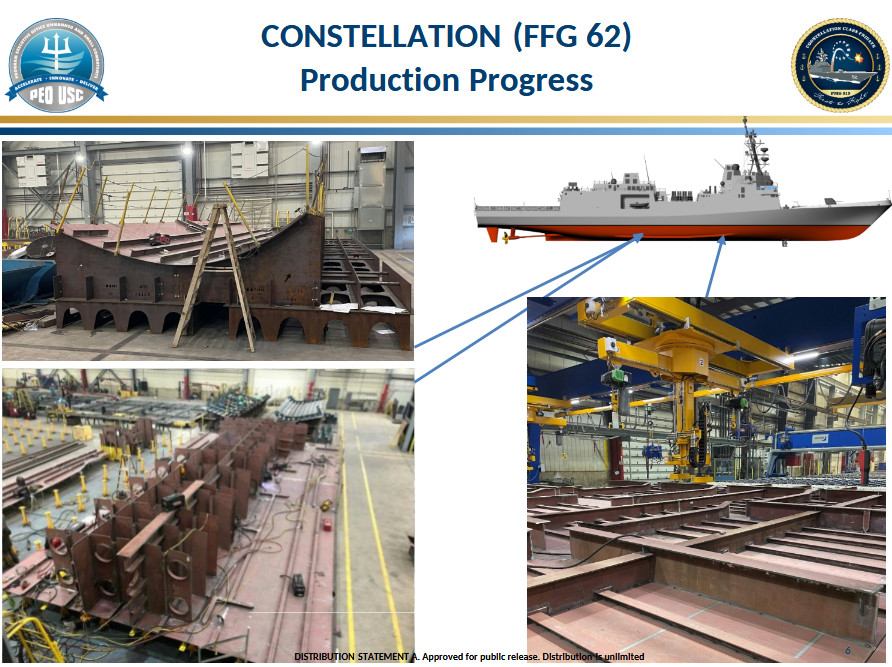
“First ship is under construction up in Marinette[, Wisconsin], roughly 10 percent done,” Vandroff said. We’re “working to finalize the design with the Navy. That has been progressing. We’ve made a lot of progress in the last year, and we expect to have the functional design wrapped up here in late spring, early summer.”
The Navy first announced in 2020 that it had picked Marinette Marine in Wisconsin, a wholly owned subsidiary of Italy’s Fincantieri, to build the Constellation class. Construction of the USS Constellation began in August 2022. The Navy currently has a total of six of the ships on order, out of what is still expected to be an initial tranche of at least 10 of the frigates. The first example is currently slated to be delivered in 2029.
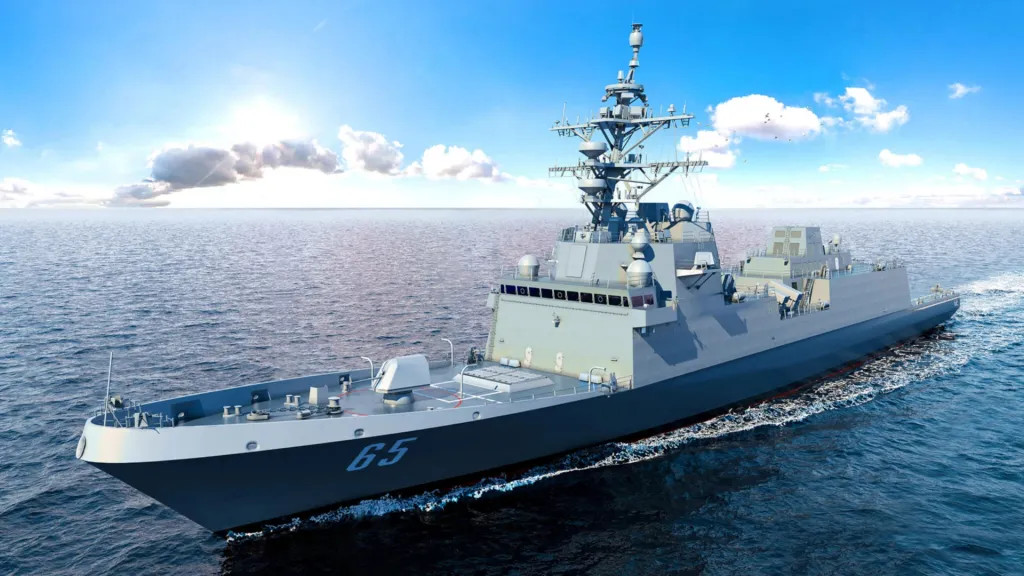
“What I would say is, with the Navy, we’re converging the design,” Vandroff added when asked specifically for an update on changes to the Constellation class design from the parent FREMM. “You know, we’re responsible for producing the functional design. The Navy has to approve the functional design. So, as we go back and forth to get our design to be fully approved by the Navy, we’re converging on that final design.”
The Constellation class design has already grown significantly in physical size and total displacement over the baseline FREMM configuration, which has prompted concerns about expected performance. Substantial changes have also been made to the overall configuration, and there is understood to now only be some 15 percent commonality between the design for the Navy and its Franco-Italian parent. The original goal was 85 percent commonality.

The design changes have also contributed to major delays and cost growth. The original plan was for USS Constellation to be delivered in 2026. The Navy had also been aiming for a unit cost of $1 billion, or potentially even less, as production of the frigates ramped up. More recent estimates have put the price tag for each of the ships at around $1.4 billion.
It is important to stress here that the Navy ran the FFG(X) frigate competition that led to the Constellation class with an explicit focus on proven, in-production designs to help reduce the risk of cost growth and schedule delays. FREMM variants are in active service today with the Italian, French, Egyptian, and Moroccan navies. More are under construction, including for the Indonesian Navy.
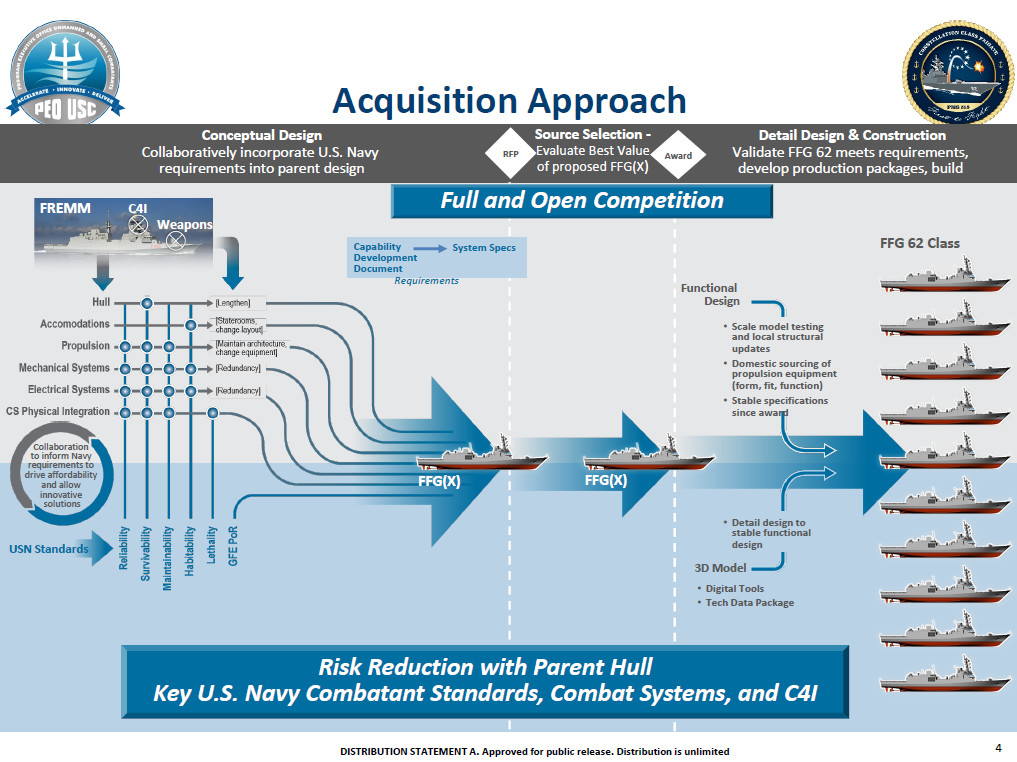
Other factors, including broad global economic disruptions due to the COVID-19 pandemic and U.S. shipbuilding industry workforce issues, have also hampered work on the Constellation class. There has been talk in the past about hiring a second shipyard to help produce the frigates, as well as bringing allies and partners into the program, which could help further drive down unit costs through economies of scale.
“So, in the facility upgrades that we made in Marinette, we’re very confident that we have enough space, the right space, the right technology, to build two frigates a year for the United States Navy workforce,” Fincantieri’s Vandroff told TWZ. “I think we have the same issues as pretty much everyone else in the American shipbuilding industry. We would certainly like more workers. We would certainly like more workers in the steel trades. There’s a nationwide shortage on welders, shipfitters, [and] to a lesser degree, electricians.”
“We’ve been making progress on that, but that is one of the challenges that we’re working through, just like any other shipyard.”
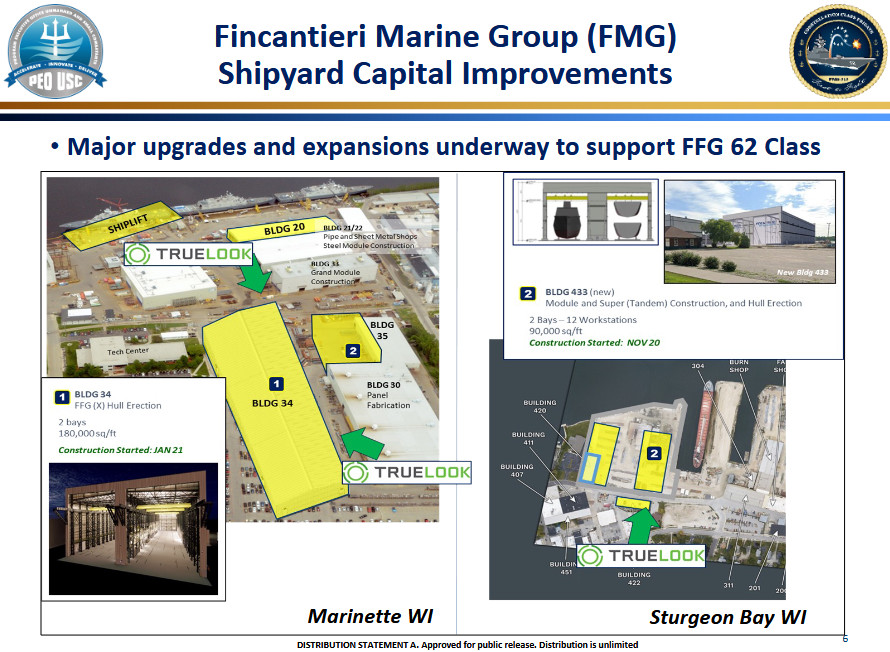
The Constellation class is hardly the only Navy shipbuilding program contending with delays and cost growth. The U.S. shipbuilding industry, when it comes to producing military and commercial vessels, has also been steadily contracting for decades now. In recent years, naval shipyard capacity, or the lack thereof, in the United States, which also has impacts on maintaining and modernizing existing vessels, has become a cause celebre. This was underscored just yesterday by a new executive order from President Donald Trump.
“The commercial shipbuilding capacity and maritime workforce of the United States has been weakened by decades of Government neglect, leading to the decline of a once strong industrial base while simultaneously empowering our adversaries and eroding United States national security,” the executive order, titled “Restoring America’s Maritime Dominance,” declares in its opening. “Both our allies and our strategic competitors produce ships for a fraction of the cost needed in the United States. Recent data shows that the United States constructs less than one percent of commercial ships globally, while the People’s Republic of China (PRC) is responsible for producing approximately half.”
TWZ has previously reported in great detail on the massive and worrying disparity between the United States and China when it comes to shipbuilding.
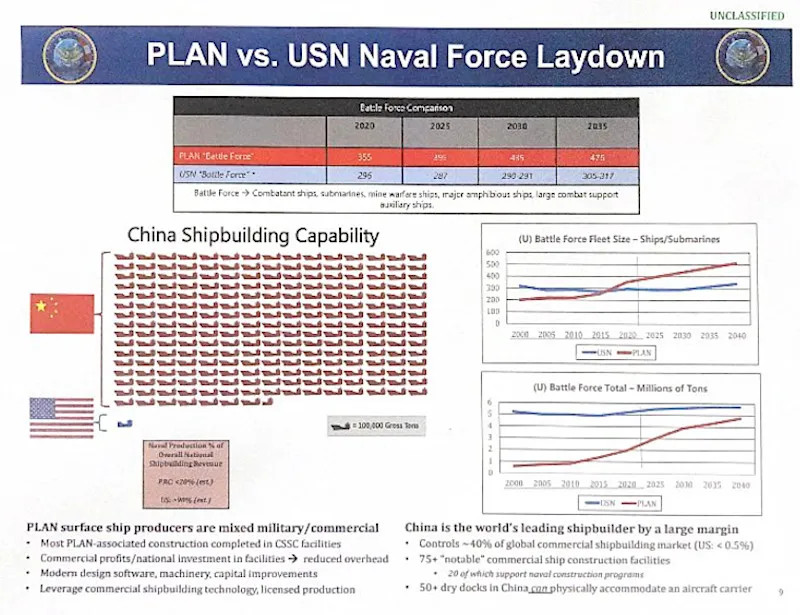
The new executive order directs “the Secretary of Defense, the Secretary of Commerce, the Secretary of Transportation, and the Secretary of Homeland Security” to “conduct a review of shipbuilding for United States Government use and submit a report to the President with recommendations to increase the number of participants and competitors within United States shipbuilding, and to reduce cost overruns and production delays for surface, subsurface, and unmanned programs” within 45 days. “This report must include separate itemized and prioritized lists of recommendations for the United States Army, Navy, and Coast Guard.”
Much of the rest of the executive order is in line with the proposed Shipbuilding and Harbor Infrastructure for Prosperity and Security for America Act, or SHIPS Act, that a bipartisan group of legislators put forward last year and that you can read more about here.
“We will set realistic, achievable schedules, and we will commit to them. We will eliminate the waste and inefficiencies that drain resources without delivering results. We will demand accountability from our shareholding enterprise, because every dollar, every day … counts,” recently confirmed Secretary of the Navy John Phelan also told a gathering at the Sea Air Space 2025 convention earlier this week. “To avoid repeating mistakes of poorly executed programs, we will work closely with the shipbuilding industry to calculate risk more effectively, ensure that every dollar spent on defense leads to tangible, measurable results.”
“Change is coming, and my responsibility is to make sure that we have the right people in the right seats on the right platforms,” he added.

How any of this may impact plans for the Constellation class, specifically, remains to be seen.
“We are at a tipping point with Constellation. It started out saying we’re going to take the FREMM concept, 85 percent complete, we’ll add our 15 percent to it, and then we’ll go right to construction,” Rob Wittman, a Republican in the House of Representatives from Virginia who is currently Vice Chairman of the House Armed Services Committee, said during a panel discussion at Sea Air Space 2025 yesterday. “We look right now, [it is] over cost, over budget, because that is reversed. Now it’s 15 percent the original design [and] 85 percent add-ons.”
“The question is, are we at a point where we either quickly recover and get back on track with this, get back to schedule, get back to budget – I don’t know that you could make up schedule – or do you say, maybe we’re too far along with this, and we go in a different direction,” Wittman continued. “The Navy is going to have to ask that question now. It can’t push it off in the future.”
Members of Congress have already been ever-more outspoken about their displeasure with the state of the Navy’s Constellation class program, and big decisions regarding the Navy’s frigate plans look increasingly to be on the horizon with the USS Constellation just 10 percent complete and still years away from being delivered.
Howard Altman contributed to this story.
Contact the author: joe@twz.com
